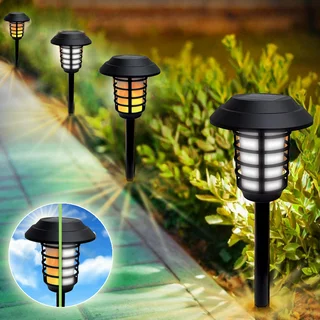Introduction:
In the vast tapestry of technological progress, few innovations have captured the essence of sustainable brilliance as profoundly as the solar light. The evolution of these luminous companions spans centuries, transforming from simple flames to sophisticated LED-powered marvels. In this exploration, we delve into the fascinating journey of solar lights, tracing their historical roots, examining pivotal technological breakthroughs, and celebrating the integral role that LED lights play in their contemporary manifestation.
-
Inception: The Flame-Fueled Glow:
The earliest iteration of solar lights dates back to ancient civilizations, where humans harnessed the power of the sun to illuminate their nights. In its primal form, fire served as the primary source of light, with communities relying on torches, oil lamps, and candles. While these early attempts were primitive, they laid the foundation for the human fascination with harnessing the sun’s energy for illumination.
-
The Advent of Solar-Powered Lights:
The true evolution of solar lights began with the harnessing of solar energy for more practical applications. In the 19th century, inventors and scientists experimented with photovoltaic cells, the foundational technology behind solar power. These early solar cells were cumbersome and inefficient, but they marked the inception of a new era in which the sun could be harnessed to generate electricity for lighting.
-
Incandescent Bulbs and the Early Challenges:
As the 20th century dawned, the development of incandescent light bulbs revolutionized artificial illumination. Solar lights began incorporating these bulbs, but the energy demands of incandescents were considerable, posing a challenge for solar-powered applications. The inefficiencies of both early solar cells and incandescent bulbs hindered widespread adoption, and solar lights remained a niche concept for many decades.
-
LED Lights: A Paradigm Shift:
The turning point in the evolution of outdoor solar lights came with the advent of Light Emitting Diode (LED) technology. In the 1960s, LEDs emerged as a novel and energy-efficient alternative to traditional incandescent bulbs. Unlike incandescents, which produce light by heating a filament, LEDs emit light through the movement of electrons in a semiconductor material. This groundbreaking technology marked a paradigm shift in the world of illumination, offering a more sustainable and versatile option.
-
The Marriage of Solar Power and LED Brilliance:
The marriage of solar power and LED technology proved to be a match made in innovation heaven. LEDs not only consumed significantly less energy than incandescent bulbs but also offered unparalleled durability and design flexibility. As solar cells became more efficient and affordable, the combination of solar power and LED lights paved the way for a resurgence in solar lighting applications.
-
Solar Garden Lights: Aesthetic and Sustainable Elegance:
The fusion of solar power and LED lights found a perfect canvas in outdoor lighting, giving rise to solar garden lights. These lights, often adorned with artistic designs and equipped with efficient solar panels, brought a touch of aesthetic elegance to gardens, pathways, and outdoor spaces. The soft glow of LED lights not only enhanced the visual appeal of landscapes but also marked a shift towards eco-friendly and sustainable outdoor illumination.
-
Energy Efficiency and Longevity:
The pivotal advantage of LED lights in solar applications lies in their energy efficiency and longevity. LEDs consume significantly less energy than traditional incandescents, allowing solar lights to operate for extended periods on a single charge. The longevity of LEDs also means fewer replacements, reducing maintenance costs and contributing to the overall sustainability of solar lighting systems.
-
Versatility in Design:
LED technology offers unparalleled design flexibility, allowing solar lights to take on various shapes, sizes, and colors. Solar garden lights, in particular, became a canvas for creative expression, featuring intricate patterns, vibrant hues, and even programmable lighting effects. This versatility not only serves functional purposes but also transforms solar lights into artistic elements that seamlessly blend with outdoor aesthetics.
-
Technological Advancements: Smart Solar Lights:
In the era of smart technology, solar lights have evolved beyond mere illumination. Integrating with advanced sensors, connectivity, and automation, smart solar lights have entered the scene. These lights can adjust their brightness based on ambient conditions, be controlled remotely through mobile apps, and even synchronize with other smart devices. The incorporation of LED technology plays a crucial role in enabling these innovative features, pushing the boundaries of what solar lights can achieve.
-
Towards a Sustainable Future:
As we stand on the cusp of a sustainable future, the evolution of solar lights serves as a testament to human ingenuity and our capacity to harness renewable energy sources. The journey from flickering flames to the energy-efficient brilliance of LED lights in solar applications reflects our commitment to eco-friendly practices and a profound desire to illuminate our world responsibly.
Conclusion:
The evolution of solar lights, marked by the integration of LED technology, has transformed these humble sources of illumination into symbols of sustainability and innovation. From their ancient roots to the contemporary solar garden lights adorned with vibrant LED brilliance, these luminous companions have come a long way. As we continue to embrace the possibilities of solar power and LED lights, the evolution of solar lights becomes not just a historical journey but a beacon lighting the way towards a brighter, more sustainable future.










